Review: SAGA Trio macro lens system
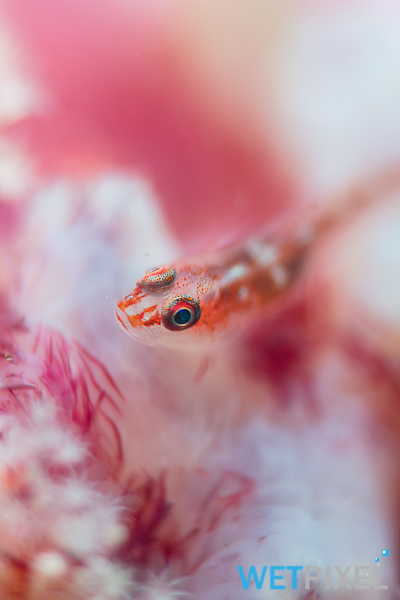
Spanish manufacturer SAGA approached Wetpixel in September 2016 with an intriguing proposition: How would we like to try out a new macro lens idea?” José and Jordi explained that they had a new prototype macro lens that wanted testing, and it somehow allowed the user to change magnification without removing the lens….
As it happened, Wetpixel was in Indonesia for the Wetpixel/Alex Mustard Macro Workshop, so SAGA arranged to get a prototype of the Trio lens to us in Lembeh. At that point it was not yet patented, so we were “sworn” to secrecy.
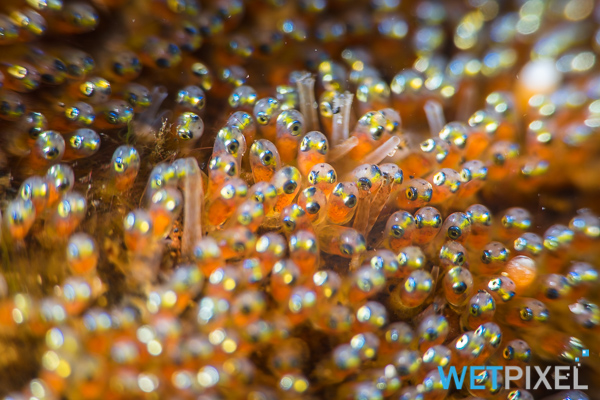
It is now in production.
The SAGA Trio is a housed lens system, containing a +5 and +10 diopter. It attaches to the lens port with an M67 thread and has two levers that allow the lens to be dropped down or retracted to suit. The Trio housing is ruggedly constructed from 40 micron black anodized 6082 aluminum with the levers colored red. The M67 threaded attachment is designed so that the unit can be rotated to suit strobe, camera orientation and/or focus light position. Maximum depth is 100 meters (300 feet).
The housing has two BK7 glass windows that have anti-scratch and anti-reflection coatings. Internally, there are three lenses in two groups. Hence, the user has 4 selectable optical options in one unit: No magnification, +5, +10 and +15.
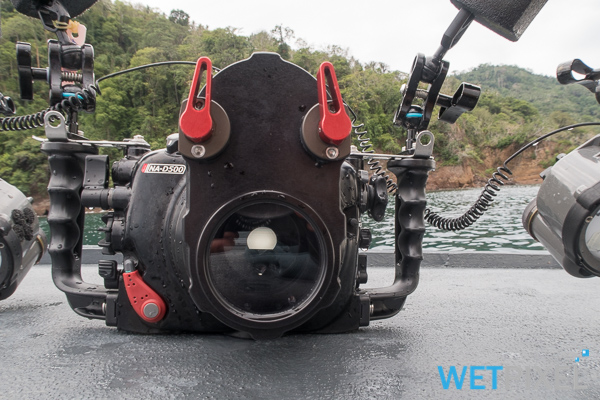
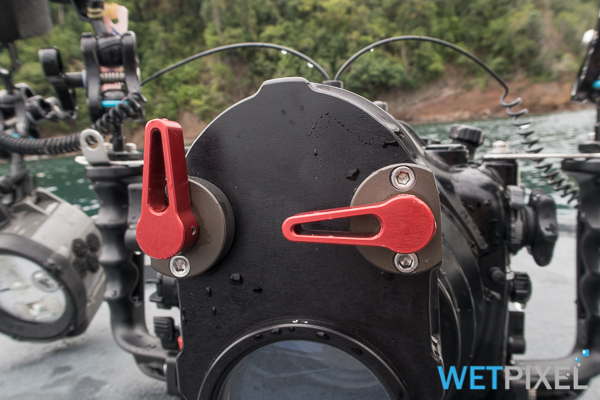
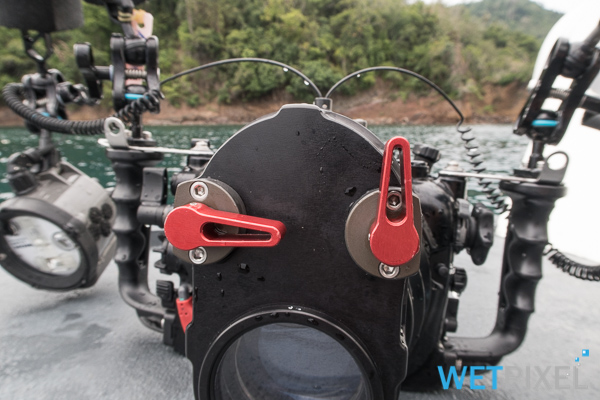
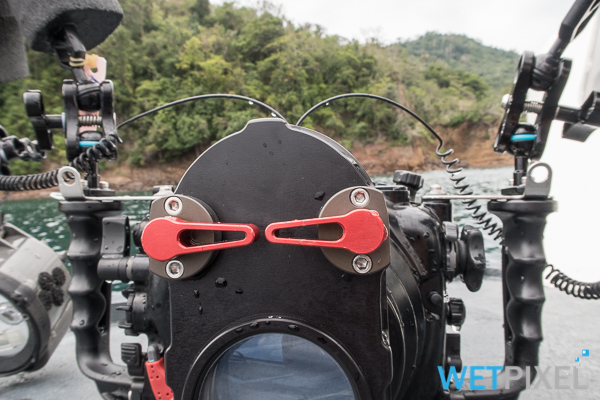
The above images are all of the prototype version. The production version has the magnification options laser etched into the unit’s body
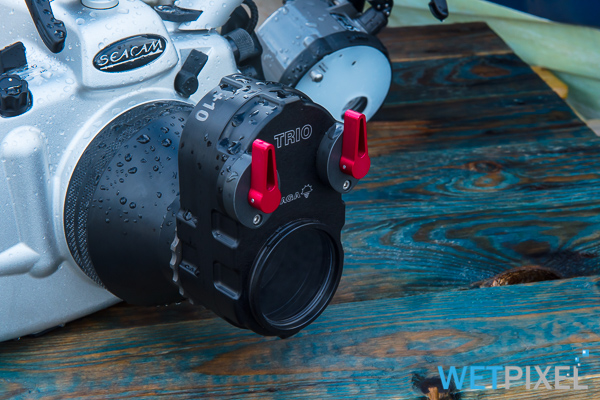
Depending on a wet lens’s construction, some of its magnification can be lost when the lens’s surface is in contact with water rather than air. The Trio’s optical elements are kept in contact with air, even underwater, so no magnification power is lost.
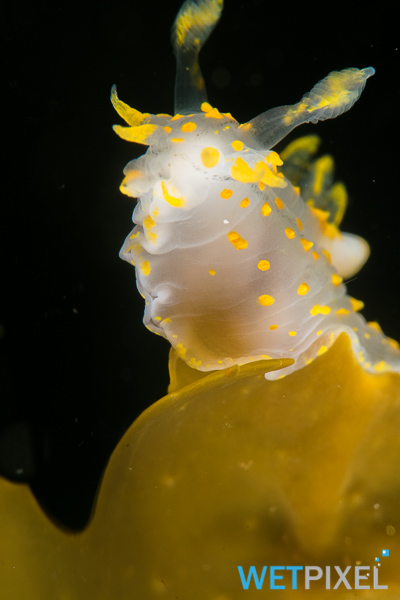
In use
The prototype lens that was supplied to Wetpixel in Indonesia was a test model and did have a few small problems. At DEMA in November, SAGA provided a production model that had addressed and eliminated these issues. Practically, the internal lenses now lock into the position, preventing them from inadvertently dropping down. In addition, there is some improvement in the optical performance of the unit, particularly when used without diopters engaged (i.e. with no magnification).
What was obvious in using the Trio in Indonesia is its versatility. It is straightforward to go from the lenses maximum magnification to +15 with a single subject and series of images. Simply start at the camera lens’s minimum focus distance, drop down the +5 and move closer, then the +10, and lastly both lenses, giving +15. At each increase of magnification there is, of course, a corresponding reduction in working distance.
Wetpixel Associate Editor Alex Mustard also had the opportunity to use the prototype Trio in Indonesia and he felt that the optical quality of the prototype was very good, but not the “very, very best.” He also suggested that a mount point for a focus light on the Trio’s housing would be a good idea and that the mounting solution suited conically shaped macro ports, rather than the squarer versions.
He shot these as test images:
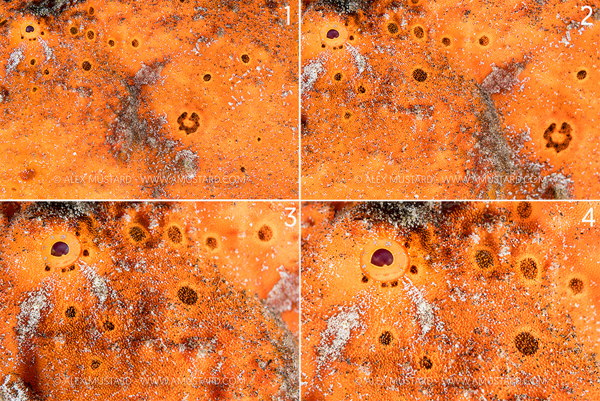
Here is a series of images taken using a Nikon D500 with a Nikon 60mm f2.8 micro lens:

It should be noted that SAGA recommend the use of focal lengths of around 100mm rather than 60mm with the Trio.
In warm water, handling equipment is arguable relatively straightforward, and diopters can be readily exchanged in situations where the user can screw or unscrew wet lenses.
Wetpixel was able to take the production version of the Trio to Norway for the Gulen Nudibranch Safari. In the cold, clear water being able to change magnification with a simple lever movement really increases productivity.
The following series of images of a Corymorpha sp. hydroid were all taken on the Gulen house reef, Norway with a Nikon D500 with a Nikon 105mm f2.8 VR lens. Settings were 1/200s at f32, ISO100. Flash was provided via TTL with an Inon Z240 strobe.
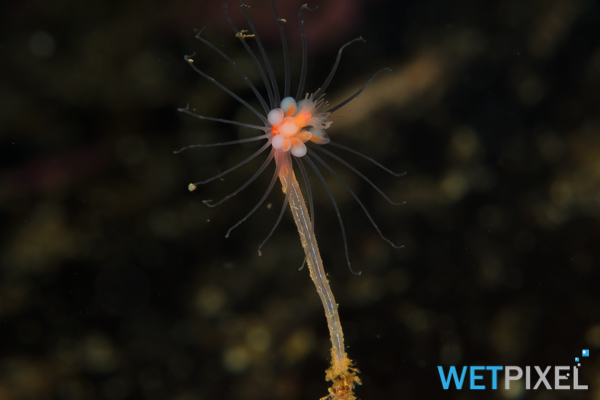
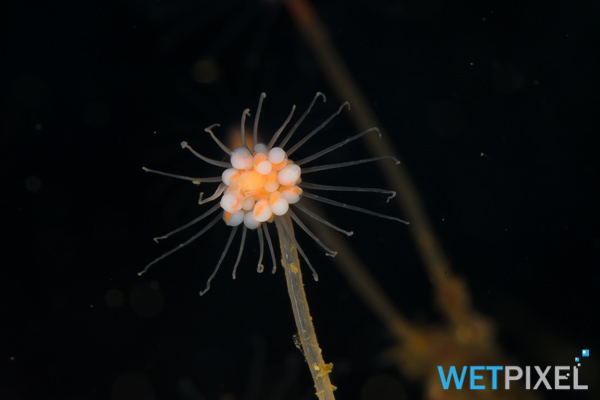
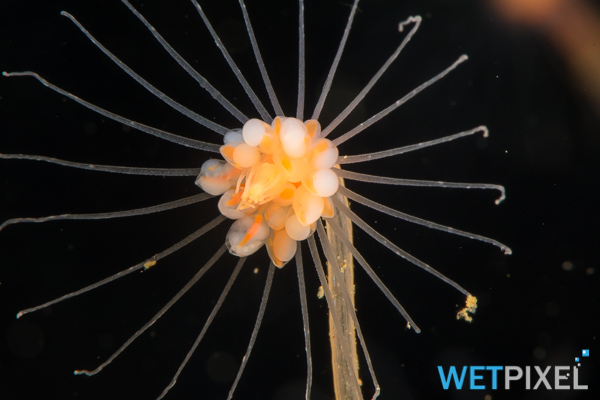
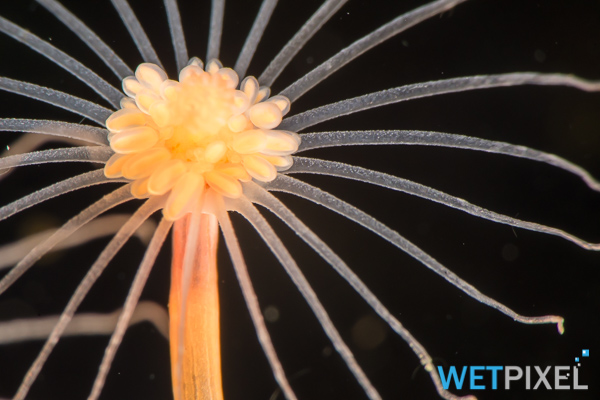
Optically, the Trio seems very sharp.
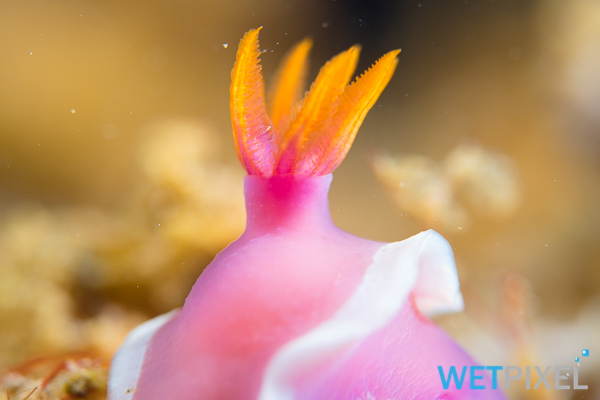
For this review, it has been used with both Nikon 60mm f2.8 micro and 105mm f2.8 VR, and in both cases even at +15, fine details are preserved.
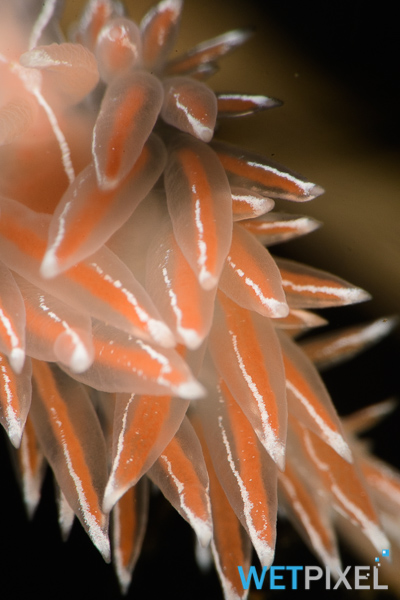
Camera focus works with both +5 and +10 lenses in place to some extent. Once both lens elements are dropped into place, the lens needs to be racked in to its closest focus and then the camera rocked in and out gently to achieve sharp images.
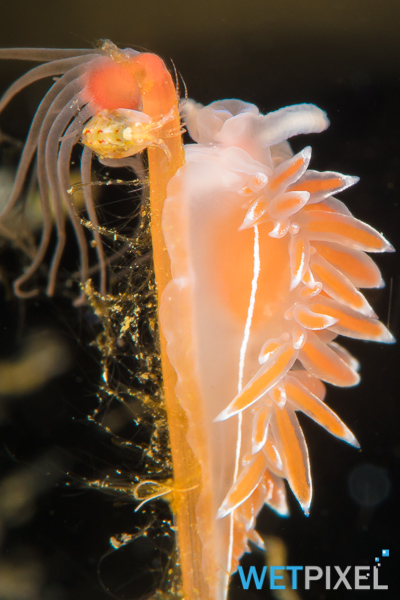
In common with many diopters, the Trio produces a smooth defocused background, which can be used creatively with relatively open apertures.
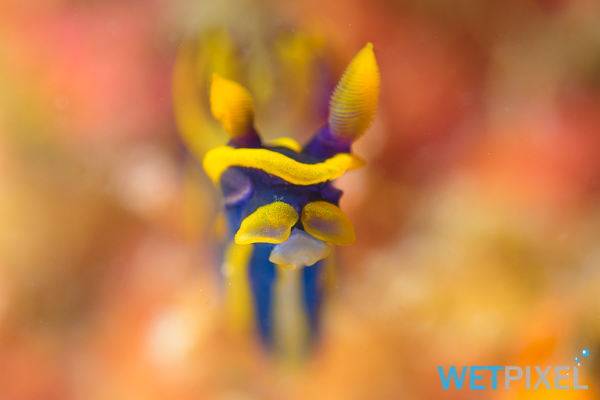
I tend to avoid the use of flip type diopter holders I like to move my strobes around a lot and regularly switch between vertical and landscape orientations.
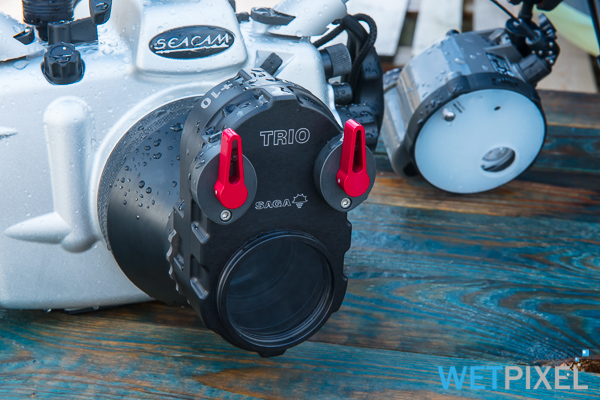
I find that the flip holders tend to get in the way of this (I don’t tend to use a focus light if I can avoid it for the same reason). The Trio does present some similar problems, but it can be easily rotated out of the way if needed. Given that the Trio offers 3 magnification options, it is effectively the equivalent of a triple flip holder. Three flips would significantly affect available strobe position choices.
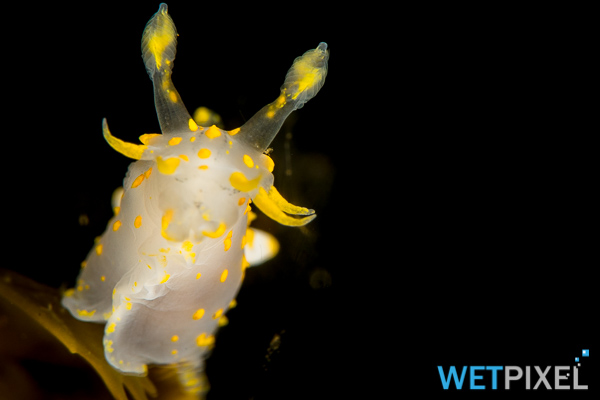
The Trio adds significant length to the front of the lens port. In order to avoid squashing subjects, it is critical to lift your eye from the viewfinder while manoeuvring the lens in close proximity to subjects. The alternative is to pick a visual “landmark” just in front of the subject, pick this up in the viewfinder and then use it to gently “walk” the lens in close.
This additional length also means that slightly longer strobe arms are required. With bigger strobes, this actually makes it easier to position them along the port, but with smaller strobes, it is important to have enough arm length to be able to get the strobes at least in line with the front of the Trio. Creatively, using side lighting needs longer arms and backlighting longer again!
The Trio weighs 700g (25 oz.) although the additional air space in the Trio’s design means that its buoyancy characteristics are similar to those of most larger wet lenses This extra weight on the end of a long lens port does add strain to the user’s wrists. It is possible to use a flotation collar, but this will impact on strobe placements.
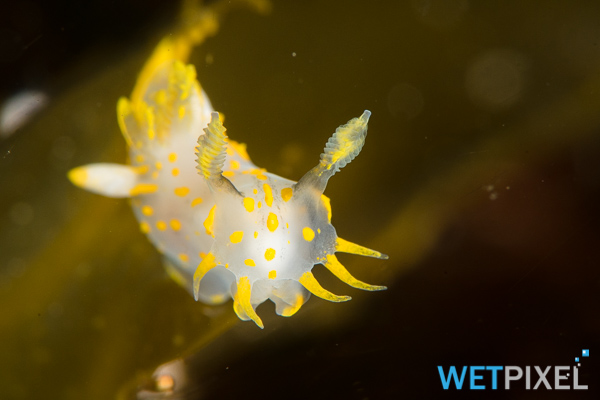
Alex’s thoughts were that he would choose to use the Trio when : “The easy of use is the most important factor - such as cold water diving with gloves.”
In many ways, simplification is one of the keys to creating underwater images. Streamlining and simplifying the equipment used helps the photographer to concentrate on creative aspects and finding suitable subjects. This is especially true in challenging environmental conditions. The SAGA Trio provides this simplicity and is a versatile and effective means to achieve super macro images, without sacrificing image quality.
The Trio is available now from SAGA or your local specialist underwater photography retailer. It is priced at €847.00 in Europe.
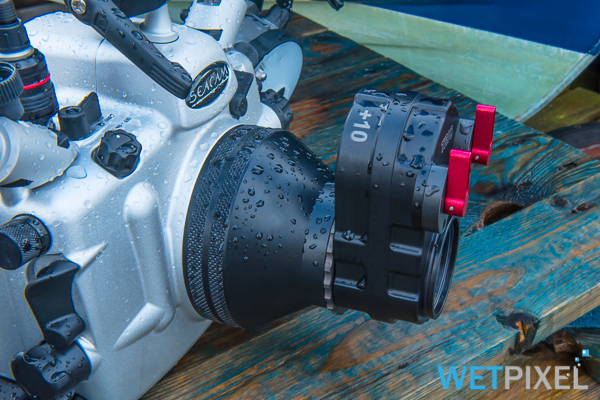
FTC Disclosure
A prototype of the Trio lens was loaned for the first part of this review. Subsequently, SAGA kindly supplied a production version to the reviewer.